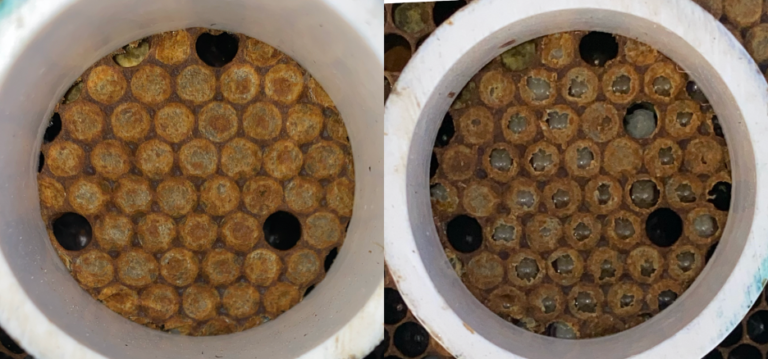Wagoner (1), J. G. Millar (2), J. Keller (3), J. Bello (2,4), P. Waiker (1), C. Schal (3), M. Spivak (5), and Rueppell (6)
- Department of Biology, University of North Carolina Greensboro, USA
- Department of Entomology, University of California Riverside, USA
- Department of Entomology, North Carolina State University, USA
- Current address: Provivi Inc., Santa Monica, CA USA
- Department of Entomology, University of Minnesota, St. Paul, MN USA
- Department of Biological Sciences, University of Alberta, Edmonton, Alberta Canada
Abstract
Despite numerous interventions, the ectoparasitic mite Varroa (Varroa destructor Anderson and Trueman [Mesostigmata: Varroidae]) and the pathogens it vectors remain a primary threat to honey bee (Apis mellifera Linnaeus [Hymenoptera: Apidae]) health. Hygienic behavior, the ability to detect, uncap, and remove unhealthy brood from the colony, has been bred for selectively for over two decades and continues to be a promising avenue for improved Varroa
management. Although hygienic behavior is expressed more in Varroa-resistant colonies, hygiene does not always confer resistance to Varroa. Additionally, existing Varroa resistance selection methods trade efficacy for efficiency, because those achieving the highest levels of Varroa resistance can be time-consuming, and thus expensive and impractical for apicultural use. Here, we tested the hypothesis that hygienic response to a mixture of semiochemicals associated with Varroa-infested honey bee brood can serve as an improved tool for predicting colony-level Varroa resistance. In support of our hypothesis, we demonstrated that a mixture of the compounds (Z)-10-tritriacontene, (Z)-8-hentriacontene, (Z)-8-heptadecene, and (Z)-6-pentadecene triggers hygienic behavior in a two-hour assay, and that high-performing colonies (hygienic response to ≥60% of treated cells) have significantly lower Varroa infestations, remove significantly more introduced Varroa, and are significantly more likely to survive the winter compared to low-performing colonies (hygienic response to <60% of treated cells). We discuss the relative efficacy and efficiency of this assay for facilitating apiary management decisions and selection of Varroa-resistant honey bees, as well as the relevance of these findings to honey bee health, pollination services, and social insect communication.

